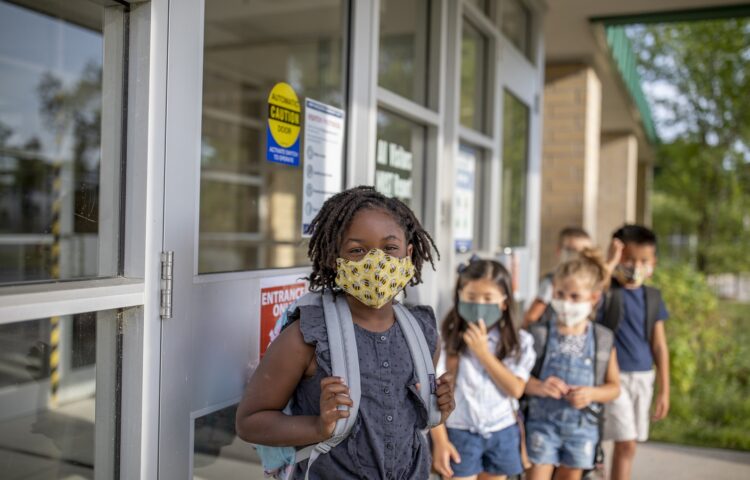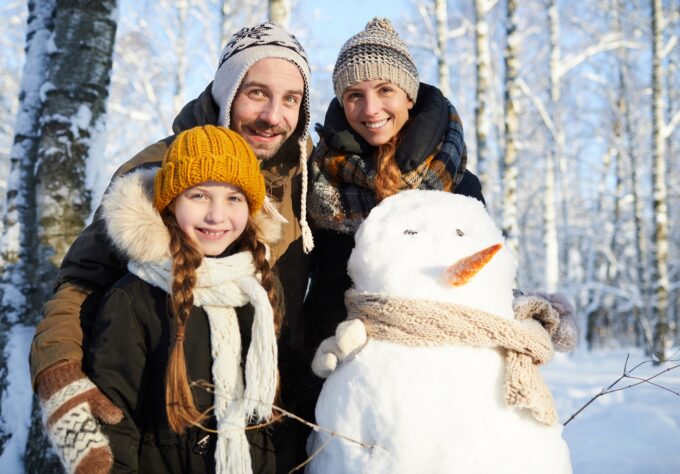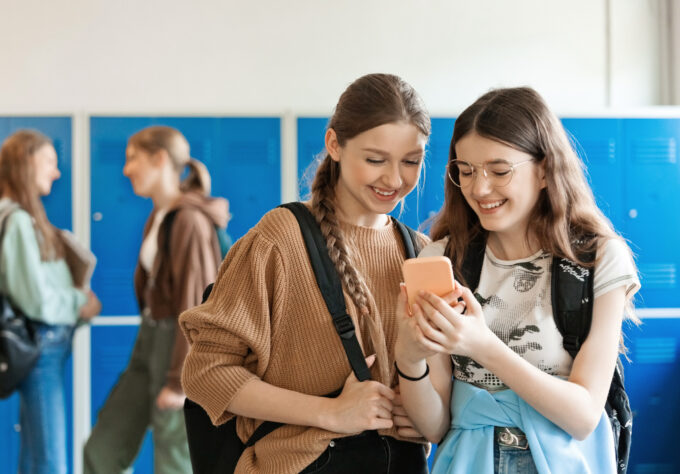Kids wear a lot of things to stay safe at school … shoes to protect their feet, sunscreen to protect their skin on late summer days and a jacket to protect against the fall chill.
Once again, this school year, wearing a face mask may be included in that back to school list, depending on where your child goes to school.
When Everyone at School is Wearing a Mask
Since the Delta variant of COVID-19 is more transmissible than previous strains of the virus, some schools are requiring indoor masking for all teachers, staff, students, and visitors, regardless of vaccination status.
Changing rules over the past few years may confuse your child. Help them understand with these six tips!
- Explain why kids and adults are wearing a mask. Keep the explanation simple: “I wear a mask to keep you safe. You wear a mask to keep me safe.”
- Normalize by wearing a mask to help your child see other people are wearing masks too. Play a game when you’re out: do you see a person with a green shirt wearing a mask? Do you see a person with blue sneakers wearing a mask?
- Be a good role model by wearing a mask whenever you leave the house.
- Let your child practice wearing a mask at home before wearing one to school. Let your child do a fun activity at home while wearing a mask.
- Adapt to your child’s preferences. Try different designs for the mask, or a fabric with images your child loves.
- Help your child understand what will be expected at school by reading this special story with them about wearing a mask at school.
When Everyone at School Isn’t Wearing a Mask
If your family has determined that your child will wear a mask in a school district where it’s not required, prepare them for questions that may be asked from other kids, and sometimes even staff. They may even encounter bullying.
It’s helpful for children to know in advance what they can say in such situations. If you and your child are comfortable sharing information, create a script and practice it with your child on their choice to wear a mask. Having the words, being able to make eye contact and advocating for themselves should decrease a negative response or bullying.
Example:
- I’m wearing a mask because my grandmother lives with me and she would get very sick if she got COVID-19.
- I’m wearing a mask because I get sick quicker than other kids.
If you choose not to be specific, help your child to know that it’s OK to simply answer:
- I’m wearing a mask to help keep everyone safe.
Additionally, talk to your child’s teachers about why they’re wearing masks. Teachers play a huge role in educating and supporting these choices.
Encourage your child to talk to you and their teachers if questions and responses get to the point of bullying.
Watch for Signs of Stress
Children and adolescents react based on what they see from the adults around them. The best support for your children is dealing with COVID-19 calmly and confidently.
Pay attention to how your children are responding during these stressful times. Watch for these changes in your children and talk with your healthcare provider if you notice them.
- Extra crying or irritation in younger children.
- Returning to outgrown behaviors (like bedwetting).
- Extreme worry or sadness.
- Unhealthy eating or sleeping habits.
- Irritability and “acting out.”
- Poor grades or avoiding school.
- Difficulties with attention and concentration.
- Avoiding activities enjoyed in the past.
- Unexplained headaches or body pain.
- Use of alcohol, tobacco, or other drugs.



